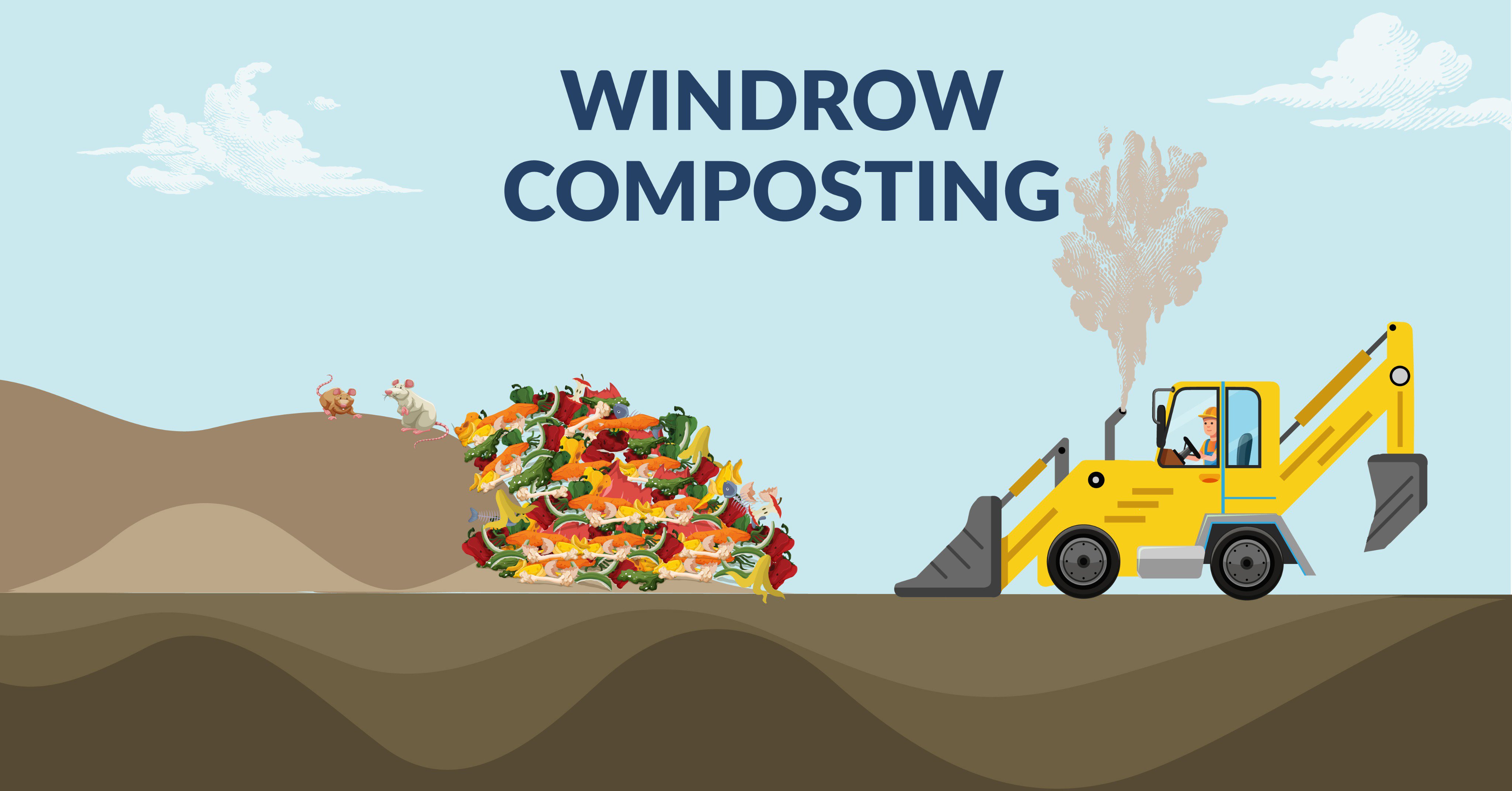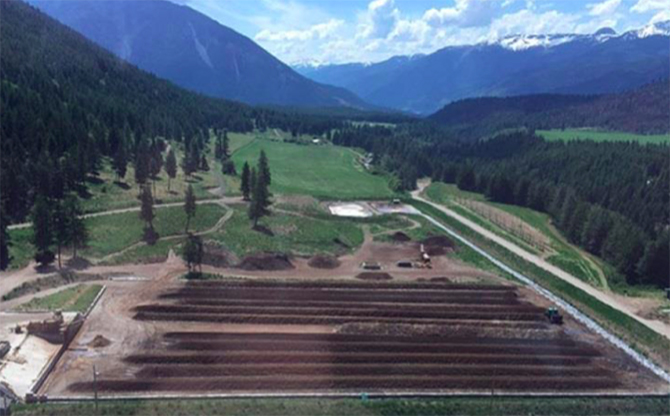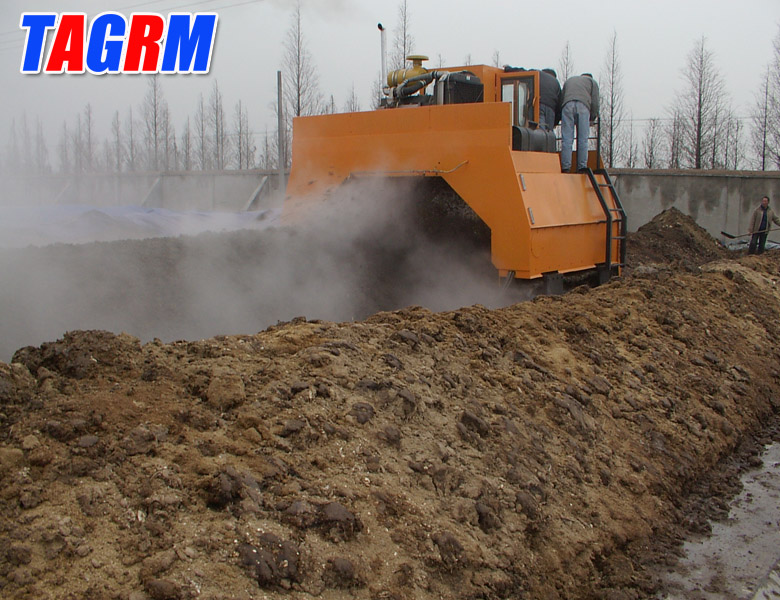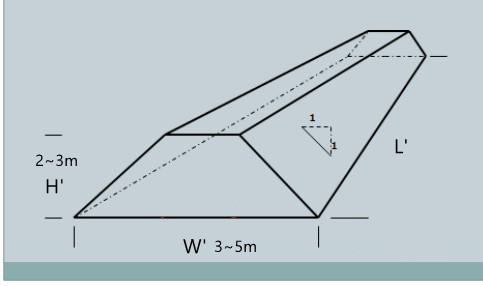Windrows composting is the simplest and oldest type of composting system. It is in the open air or under a trellis, the compost material is piled into slivers or piles, and fermented under aerobic conditions. The cross-section of the stack can be trapezoidal, trapezoidal, or triangular. The characteristic of sliver composting is to achieve an aerobic state in the pile by turning the pile regularly. Thefermentation period is 1~3 month.
1. Site preparation
The site should have enough space for the composting equipment to be easily operated between the stacks. The shape of the heap should be kept unchanged, and attention should also be paid to the impact on the surrounding environment and leakage problems. The site surface should meet the requirements of two aspects:
1.1 It must be strong, and asphalt or concrete is often used as the fabric, and its design and construction standards are similar to those of highways.
1.2 There must be a slope to facilitate the rapid flow of water away. When hard materials are used, the slope of the surface of the site shall not be less than 1%; when other materials (such as gravel and slag) are used, the slope shall be not less than 2%.
Although in theory only a small amount of drainage and leachate exists during the composting process, the production of leachate under abnormal conditions should also be considered. A leachate collection and discharge system shall be provided, including at least drains and storage tanks. The structure of gravity drains is relatively simple, and usually underground drain systems or drain systems with gratings and manholes are used. For sites with an area larger than 2×104m2 or areas with high rainfall, a storage tank must be built to collect compost leachate and rainwater. The composting site generally does not need to be covered with a roof, but in areas with heavy rainfall or snowfall, to ensure the normal operation of the composting process and composting equipment, a roof should be added; in strong wind areas, a windshield should be added.
2. Building compost windrow
The shape of the windrow depends mainly on the climatic conditions and the type of turning equipment. In areas with a lot of rainy days and a large amount of snowfall, it is advisable to use a conical shape that is convenient for rain protection or a long flat-topped pile. The relative specific surface (ratio of outer surface area to volume) of the latter is smaller than that of the conical shape, so it has little heat loss, and make more materials in a high-temperature state. In addition, the choice of the shape of the pile is also related to the ventilation method used.
In terms of the size of the compost windrow, first, consider the conditions required for fermentation, but also consider the effective use area of the site. A large pile can reduce the footprint, but it’s height is limited by the strength of the material structure and ventilation. If the structural strength of the main components of the material is good and the pressure bearing capacity is good, the windrow height can be increased accordingly on the premise that the collapse of the windrow will not be caused and the void volume of the material will not be significantly affected, but with the increase of the height, The ventilation resistance will also increase, which will lead to a corresponding increase in the outlet air pressure of the ventilation equipment, and if the pile body is too large, anaerobic fermentation will easily occur in the center of the pile body, resulting in strong odor and affecting the surrounding environment.
According to the comprehensive analysis and actual operation experience, the recommended size of the stack is: bottom width 2-6 m(6.6~20ft.), height 1-3 m(3.3~10ft.), unlimited length, the most common size is: bottom width 3-5 m(10~16ft.), height 2-3 m(6.6~10ft.), Its cross-section is mostly triangular. The suitable heap height for domestic waste composting is 1.5-1.8 m(5~6ft.). In general, the optimum size should depend on local climatic conditions, the equipment used for turning, and the nature of the compost material. In winter and cold areas, to reduce the heat dissipation of compost, the size of the sliver pile is usually increased to improve the thermal insulation capacity, and at the same time, it can also avoid excessive water evaporation loss in dry areas.
If you have any other questions or needs, please contact us by the following ways:
whatsapp: +86 13822531567
Email: sale@tagrm.com
Post time: Apr-15-2022




